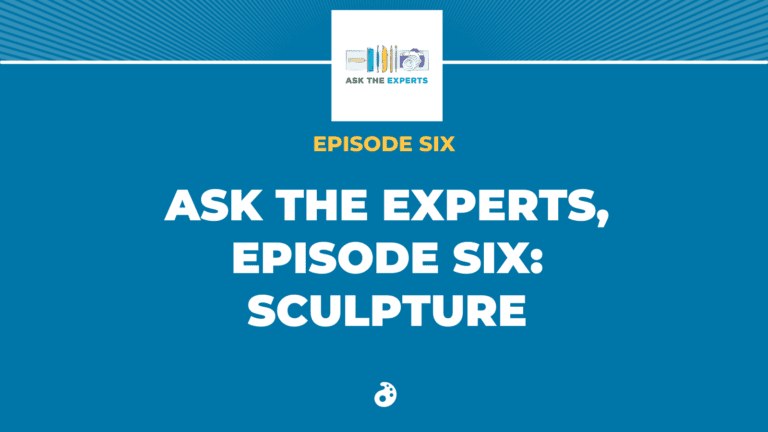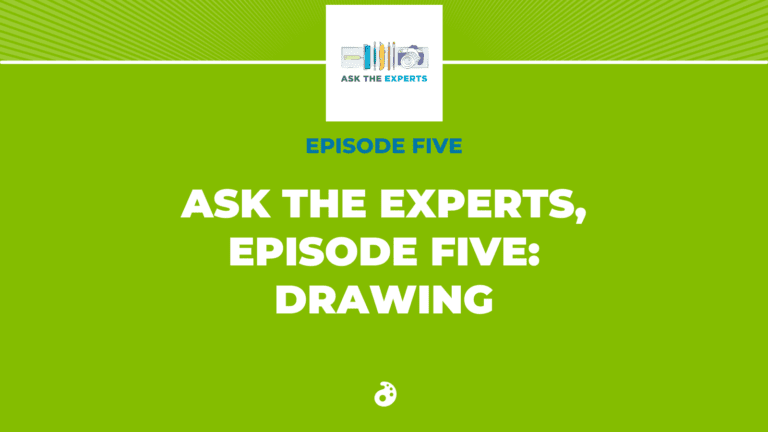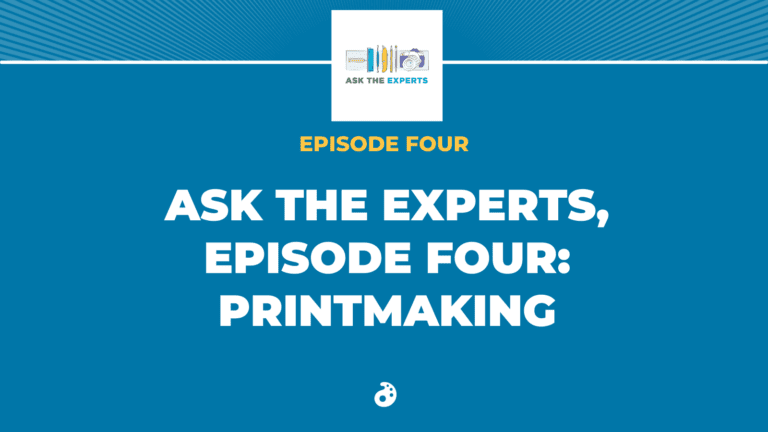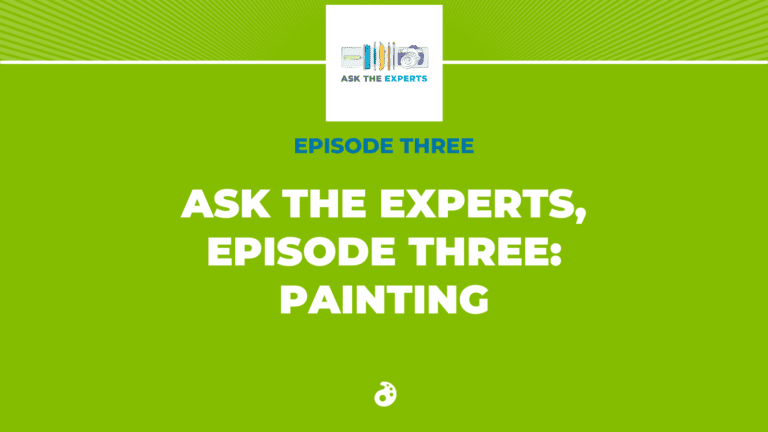Too many teachers find their budget to be the biggest concern in their classroom. It is a constant struggle when you don’t have enough money, there are never enough supplies, and we seem to never have everything that we need to teach the way we want to teach. Listen as Tim gives suggestions for inexpensive sculpture materials, how to build your students’ problem-solving skills, and how to get creative to stretch that budget. Full episode transcript below.
Resources and Links
- Art with Coach T’s Instagram
- Matt Young’s Ideas for Mixed Media Sculptures
- Tim’s Article on Sculpture Ideas
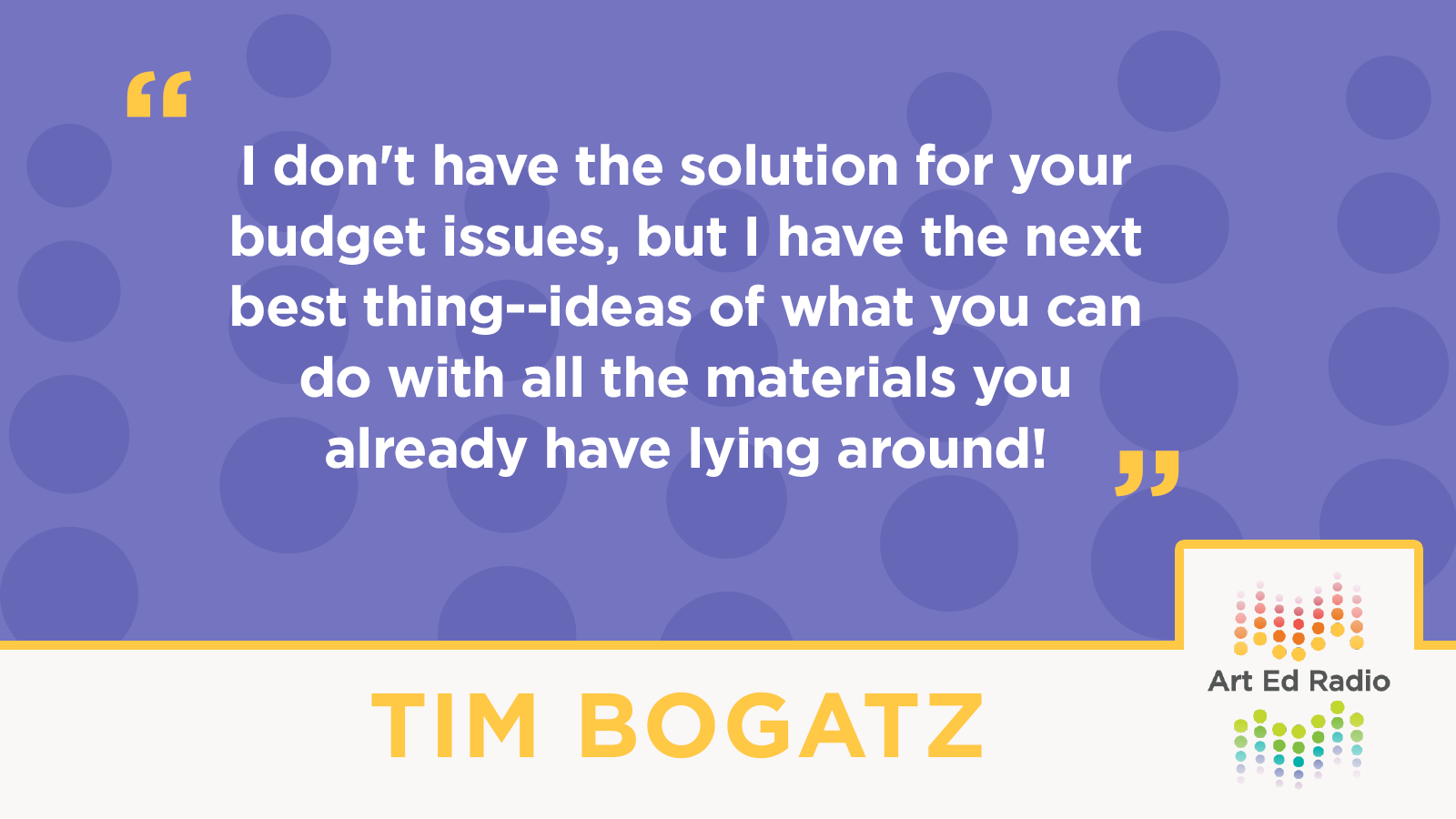
Transcript
Tim: Welcome to Art Ed Radio, the podcast for art teachers. This show is produced by the Art of Education University and I’m your host, Tim Bogatz.
As teachers, we know all too well the constant struggle with our budget. There is never enough money, there are never enough supplies and we seem to never have everything that we need to teach the way we want to teach. And I wish I had the answer. I wish I had the magic solution to help you get the money you need or the supplies you need, or figure out how to get everything you want and need for your kids. Unfortunately, I don’t have that, but I do have the next best thing, some suggestions for you on how to get some supplies for free and better yet exactly what you can do with those supplies.
I’ll just say this, it is a time-honored tradition with our teachers to piece together projects and lessons and ideas based on whatever we have available, whatever gets donated or whatever we have on hand. So today’s episode is kind of going to be in that same vein. So let’s find some random materials. Let’s get a lot of them, and let’s make some art.
Now, before we dive in though, I want to talk to you really briefly about the Art of Education University. If you just need one graduate course, if you are looking for an entire master’s degree, or really anything in between, make sure you check out courses from the Art of Education University. We offer over 20 online courses, including eight hands-on studio courses designed to help art teachers at every stage of their professional career. So whether you’re looking into developing a new art curriculum or getting help with classroom fundamentals or incorporating technology into your art room, maybe you’re just want to brush up on your own fine art skills, no matter the case, we have the course for you. So see what’s available, what interests you and what you may want to sign up for at theartofeducation.edu/courses.
All right. So let’s dive in and start talking a little bit about some of my favorite projects here. I’m going to begin with one that I just call IT geometric newspaper sculpture. And that one’s pretty simple. You’re making geometric forms out of rolled-up newspaper. And a newspaper is almost always easy to come across, a little less easier than it used to be, but you can still find it.
And for me, this lesson is super easy to present. Basically, we just roll up newspaper into a thin, long cylinder, tape the ends so it stays and then we tape those individual pieces into small geometric shapes. And then you can combine those to stack whatever forms you want to do. Triangles or pyramids usually work the best and make for the strongest sculpture, but you can do whatever you want. The requirement I always gave kids was to make the sculpture as tall as the person making it. I know that’s a good challenge for them. If you’ve got enough kids that you can do this in groups, then they almost always enjoy doing that in groups. It makes it a little easier to build those tall sculptures. So I love that idea.
And then if you have some spray paint just hanging out in your room, definitely go for it. You know, spray paint those, they can look really cool. If they’re all consistent, they look good if they have some color to them. But if you don’t have spray paint, that’s fine because the natural look actually looks pretty good, too. So that’s a fun one. Again, just roll things up into cylinders. Try and build something tall.
And I usually have kids focus on some simple things like you know, it needs to be stable, it needs to look good from all different angles, and then maybe kind of accentuates the geometric aspects of the sculpture. And again, very simple to present, very simple for them to make, but you can get some really, really cool forums and some really, really cool sculptures out of it.
Next up, I love doing an oak tag sculpture. Or whatever thicker paper that you have can work really well. If you have chipboard, that works. If you don’t have either of those, even just some watercolor paper has an interesting texture and is usually good enough to do this.
And basically, I just start with two squares or two rectangles taped together or glued together in kind of an L shape. Okay. So one lies flat on the table, the other comes up and that creates a base. And then what I do is cut all of this oak tag or whatever material you have into strips of different lengths. Okay? And they are maybe an inch, inch and a half, two inches wide, whatever you think works for you.
And you can make them six inches, 12 inches, 18 inches, a variety in between there. You can let kids cut them into different lengths. Basically what we do is we just get all of those strips, put them on the base, get some glue, and then you try and get kids working on a non-representational sculpture. It should feature some kind of movement. And that’s easy to do. Like once they get the hang of it, it’s easy to talk about form, movement, how your eye moves. So that’s a good introductory discussion there. But then, once kids start looping and overlapping and weaving things together, they really start to see how the movement works and they can take it from there.
And you can get some really, really interesting sculptures there. It can be a really simple one-day project if you want to paint it. You can do a little bit more. Again, if this could be collaborative and if that’s something you’re looking for, it can definitely do that as well. If you do want to paint them, spray paint is good. Acrylic can enhance the look too, but honestly, the sculpture itself can be really good even without that addition. So I wouldn’t worry too much about that.
A third idea that I love, as you probably know, as you’ve heard me talk about before, I love cardboard. And so I actually have a couple of ideas for you that come to create some pretty nice sculptures when you’re working with cardboard. Number one, I love to have kids create everyday objects made from cardboard. So that’s kind of a fun one just because it’s a great problem-solving exercise. Because if you’re using everyday objects, you know, just think about a hairbrush, a purse, a toothbrush, a shoe, whatever the case may be, kids know exactly what they need to make and they know exactly how it should look, and the familiarity with those everyday objects kind of gets that image in their head.
And like I said, it’s a good problem-solving exercise because they need to figure out how to get cardboard, you know, how to get their work to that point, using that cardboard, using some glue. There are a ton of tie-ins like Claes Oldenburg and his giant sculptures. Like that’s the obvious art history tie-in, and especially if you’re playing with scale, you want to take something small and build it a little bit bigger.
And if you just search online, there are a ton of artists who do things like that. One that comes to mind for me is Bartek Elsner. He does like all sorts of cardboard sculptures of nail clippers and cameras and you’ll see like bikes and cars and all different things like that. So you decide on the scale you want. You probably don’t need any giant cars taking over your classroom. But if you just do things to normal sizes here, then your kids can be really successful with that and really enjoy that.
Another one I’ve talked about before, I think I discussed this on a podcast with Andrew a long time ago, when we were talking about sculpture. I’ve had kids make cardboard furniture before. So I just kind of give them a challenge. It’s difficult. It’s time-consuming, but I have them build like functional furniture, like a chair that you can sit on or a couch that you can actually sit or lay on.
Like I said, it’s difficult, it’s time-consuming, but it works. And we start by talking about structure. I like to tell them the story about my college visual literacy class and we had to build a box, like a one-foot square box that was only made with matte board, but it had to be strong enough that someone could stand on it, and just all the pieces fitting together and how you build that structure and all the work that goes into it kind of gives them an idea of what needs to be done.
And then there’s all sorts of engineering and design thinking that goes into this. They need to figure out the strength of that structure, whether they’re doing a table or a chair, a couch, something else. You go with the structure first. And then once the structure is there, once it’s strong enough, you can worry about the exterior treatment as well. You can worry about the aesthetics after that. And it’s a good way to go through it. You can always talk about the famous form follows function quote. Make sure that you’ve got the function down first before you worry about the aesthetics as well.
And usually just cardboard, glue or hot glue usually works better, some packing tape to hold things together, whatever the case may be, right? You need a lot of cardboard and a lot of patience there, but it’s again, another awesome problem-solving exercise. Some great design thinking goes into that and just it’s a good art-making process that can teach your kids a lot. So I really like that one as well.
All right, a couple of others that I really like. One is altered books. I guarantee you, either your school library or your public library has books that they are giving away or ones that they will get rid of for super cheap, maybe even thrift stores. And then all you need are some scissors and X-Acto knives, a little bit of glue, and you can get going on these.
You’ve probably seen them before. There are a million different ways to do altered books and just a plethora of artists that do them. And you see a lot of drawings inside of books. You see a lot of carvings. I think the challenge here is making sure that your altered book is three-dimensional.
And so what I talk to my kids about, what does it mean to be really sculptural, like truly sculptural? Like how do you get three-dimensional forms inside of this altered book? And you can utilize two-dimensional aspects. That’s something that’s really important, and will go a long way here of course. But you know, if you can get your kids to form those pages into different sculptures using different folds, there’s obviously origami tie-ins, and just talk about what kinds of things you can do to do that. Maybe they need a list of prompts on how to alter pages or maybe they need a couple of extra books to experiment with to really see how to build a form.
But like I said, there’s so much visual inspiration out there when it comes to altered books, so many artists that are doing that that just spending a little bit of time, making some sketches, taking some notes as kids look at things online can be incredibly helpful as they start to develop those ideas.
Hey, now two other ideas that I want to talk about just really quickly that I think are really worthwhile actually happened at the Art Ed Now Conference, just, what, six weeks ago at the end of July there. One of them was a really cool mixed media sculpture that Matt Young did. So shout out to Matt. He talked about just bringing different materials together and talking about abstract sculptures that you can create. And he’s got a really cool form that he has his kids fill out, and they do a little bit of clay, a little bit of plaster, a little bit of wire, and he talks about how they can combine things to create a non-representational sculpture.
And he does it a lot of times at the end of the year when he’s running low on supplies, just showing kids, “Here’s what we have left. Here’s what you need to create.” And again it’s an awesome problem-solving thing. And in his presentation, he talked about how he uses it for assessment as well. And so a lot of really good things there. I hope you are able to see that. And we’ll see if I can maybe pull the download from that or some type of information that we’ll link in the show notes and see if you can check that out as well.
Then the last one that I love was newspaper pottery. Caitlyn Thompson did this idea at the conference. She’s Art with Coach T on Instagram if you want to look her up. She’s got some examples of this on her Instagram feed as well and she just takes newspapers or magazines, cuts them into like one-inch strips and just rolls them over and over and over and creates this almost like hockey puck of newspaper, which is really, really cool. And then you can form it into a cup or into a bowl and then seal it with Mod Podge.
And it’s a time-consuming process. But it’s a really cool process. And you are able to see some really, really cool things that your kids can develop. And as we know, they love their functional stuff. And so if they have a bowl that they can take home and put some candy in or spare change or whatever, I mean it seems trivial to us, but kids love those sorts of things. So look up Art With Coach T on Instagram. I’ll see if we have anything from the conference we can share there too. We’ll put that in the show notes and I think, yeah, it’ll be a good starting point for you. So a lot of ideas there. Actually I think we’ll cut that there and we need to talk about where you can get supplies as well.
All right. So obviously none of this works if you don’t have the supplies for it. And as I talked about in the intro, like it’s tough to find the supplies you need when you don’t have much of a budget. So let’s talk about where we can get these supplies for free or for cheap at least. Number one, okay, donations from school. Okay.
Don’t be afraid to ask your parents, not your parents, but the parents of your students for donations, if they have anything lying around that they think can be donated. You know, we’ve done entire episodes on like what to do with all of the donations that come in that you don’t want. But if you can narrow things down and say, “Hey, we would love scrap paper. We would love old cans of spray paint that are sitting around your garage, any scrap wood you have, any newspaper that’s sitting around, any of that stuff, feel free to donate.” And ask other teachers too as well if they have anything sitting around their classroom or sitting around their house that they’re trying to get rid of, then definitely give that a chance. See what you can get. You can do a lot with that.
Hey, and going beyond that, ask friends, ask family just like newspaper. I said it’s easy to come by. Like I’m kind of old, hopefully not that old, but I still get the newspaper. And guess what, lots of people older than me still get the newspaper too. So ask people that you know that have a subscription, “Hey can you save your papers for me?” Even if they save them for a month, you know, you have a giant box that you can do all sorts of incredible things with. And if you get that from a few different people, man, you are just rolling in it. You can make some gigantic newspaper sculptures then.
I also like to go to stores and ask if there’s anything that can be donated as well. Sometimes it’s supplies, more often it’s cardboard and boxes. A lot of times, they’ll just have a whole dumpster full of cardboard that you can just take. I think that’s always something that can be used, whether it’s for painting, whether for sculpture like we talked about, or anything else, then I think that’s pretty worthwhile to get that.
So just go in, talk to the manager, say, “Hey, I’m a teacher,” which is a great start to most conversations when you’re asking for stuff. Just say, “Hey, I’m a teacher. I’m thinking about doing this. I need a bunch of cardboard. Do you guys have anything that I can take?” And more often than not, they’ll say, “Hey, yeah. Why don’t you pull around back and we’ll have somebody load some stuff out for you?” That’s a huge win. And you can get so many things in your car. And then if you teach high school or even middle school, you just have kids walk out to your car, carry everything in for you. It makes life super easy.
And then finally, this one is questionable if you actually want to do it, but spend a lot of time doing some dumpster diving. There’s so much in there that can be used. I’ve talked before on the podcast about how much I love political signs, just any advertising, vote for whoever, for whatever race. Those work great. So once the election is over, just collect those. Again, they’re awesome as painting surfaces with a little bit of Gesso. They are awesome for sculptures if you just cut them up and start sculpting with them. Those geometric forms can do some awesome things.
You can almost always find cardboard, like I said, in recycling bins or in dumpsters. You can find scrap wood. And a lot of times, you’ll find stuff you didn’t even know you needed, you know, and just whatever piques your interest.
Now obviously, you don’t want to get too much. You don’t want it to take over your room. You don’t want to become a hoarder. But that’s a discussion for another day. The point I’m trying to make is there are a lot of opportunities for you to get these materials for cheap or for free. So definitely try and take advantage of those if you can and when you can.
All right. So let’s go ahead and wrap it up. I hope some of these ideas are things that you can use, things that can help you throughout this school year, whether you just use one idea or end up using all of the ideas. I hope it helps. And better yet, if you can just take these basics and use them as a starting point to springboard into something better, or your kids can use them to get more creative and develop something even better, please do it. Right? Take these ideas, do what you can with them and run with them. Build and sculpt and create and give your kids a chance to do something, to create something that they’re going to love, because that’s one of the reasons we’re here, isn’t it?
Art Ed Radio is produced by the Art of Education University with audio engineering from Michael Crocker. Thank you as always for listening, and we will talk to you next week.
Magazine articles and podcasts are opinions of professional education contributors and do not necessarily represent the position of the Art of Education University (AOEU) or its academic offerings. Contributors use terms in the way they are most often talked about in the scope of their educational experiences.
